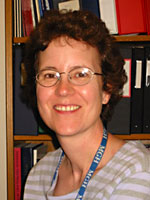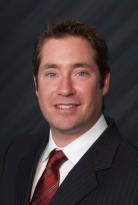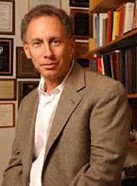
Last week, I observed that ChE-style manufacturing often doesn't fit the popular view of manufacturing, which is more mechanically than process-focused. An example is the way ChEs are deeply involved in tissue engineering, aiming to turn regenerative medicine into what I'd call "tissue manufacturing."
Potentially a new biotechnology

A few weeks ago, the Associated Press ran a story "Surprising Methods Heal Wounded Troops." One of those methods was tissue engineering of prosthetic ears at Massachusetts General Hospital, featuring chemical engineer Cathryn Sundback, co-director of the Laboratory for Tissue Engineering and Organ Fabrication. (Interestingly, she got her ChE start working on topics like coal combustion and supercritical-fluid processing.)

More recently, the Wall Street Journal told how 3-D bioprinting is beginning to yield blood vessels, bone, and other tissue for eventual surgical implanting. (You can view a video report here.) One of the interviewees for the article and video was Keith Murphy, a ChE and the CEO of Organovo Inc., the first producer of commercial bioprinters. That article finishes on the subject of making knee cartilage. Making bone, cartilage, and ligaments for knees and shoulders is a particular interest of Cato Laurencin, a ChE professor who is also an orthopedic surgeon and former Dean of the University of Connecticut School of Medicine. These approaches are now making their way into clinical use. (Learn more about his work in this video.)
Why are ChEs involved?
Bob Langer of MIT, one of the most highly recognized chemical engineers in the world, has been a pioneer in this field and a mentor to many of the ChEs in it. (You can watch an interview with Langer here.) One key was using polymers to make biocompatible materials, including tissue scaffolds, or frameworks for the growth of new tissues.

All this may seem natural now, but Bob recalls how counterintuitive it was in 1974 when he chose postdoctoral research with Dr. Judah Folkman, a physician and medical scientist who was founder of the angiogenesis-research field. He remarked, "Most people thought I was crazy professionally, and granting agencies couldn't see that any of my work should be funded. However, my colleagues and I pressed on, made discoveries, won patents, and developed companies and students who, I like to think, have transformed the field." The world seems to agree. Bob has published 1100+ papers, won 800+ patents, helped start 17 companies, is a member of all three US national academies, and has won National Medal of Science, Millennium Award, Perkin Medal, Priestley Medal, and the Draper Prize among many others. Again, he speaks eloquently of his foundation in chemical engineering.
Also, it's an applied molecular science
Another factor is that since the advent of the Human Genome Project in the 1990s, biology has become a molecular science. Traditionally, the distinctive expertise of ChEs has been to apply chemistry, aided by math and physics. If chemistry and biology and materials science can now be lumped together as molecular sciences, then one way to describe chemical engineering is "applied molecular science." Applied biology has long been part of chemical engineering, but these changes make it clearer than ever why that is so (more on that later). Next week: Changes in hydrocarbon resources.



Comments
None of the people in this post are working on a "factory floor," but they are all involved with the enterprise of creating VERY useful products that will be used to improve life -- that is, manufacturing.
These stories are really inspiring! Dr. Laurencin held multiple titles at UVA before moving on to UConn. Unfortunately I didn't have a chance to take any courses or work with him.
The versatility of the chemical engineering training is one of its appeals. The chemical engineering curriculum has provided us the ability to apply our skillset to problem solve. I do agree that the human genome has opened up more doors into linking engineering into biology/biomedical applications. I am very fascinated by tissue engineering and some of the advances in pharmaceutical engineering as well as manufacturing. In fact, I have seen many schools started focusing more on the new horizon (we see lots of polymer engineering, biomedical engineering focus vs. the traditional oil/gas focus in schools). Good post!!
Yeah! Drug delivery methods are all about transport phenomena and molecule size and porosity etc. etc. There are so many opportunities to make improvements in medical treatment methods with Chemical Engineerng principles - hopefully the FDA can adapt to these new looks at old problems relatively quickly.
Nice post! We're poised at a very exciting time in biomedical science and engineering. Where we go from here, as in many fields, will depend on whether folks steeped in their own respective trades are willing to make the compromises necessary to learn about some concepts new to them (but which have already been mastered by others), and move forward together. If they're smart, this multi-faceted approach can benefit from the strengths and progress of each field while leaving many of the weaknesses and failures of each behind. Here's to that!
Cross-funtional teams are a big part of teaming and corporate project management these days - alot more so than in the past. As long as certain projects and companies get some ChemEs on board we might just be in luck!
Drew's point speaks to a traditional strength of ChE -- the attitude and the preparation to embrace a breadth of new professional experiences. By nurturing that attitude, we strengthen the profession and our world.